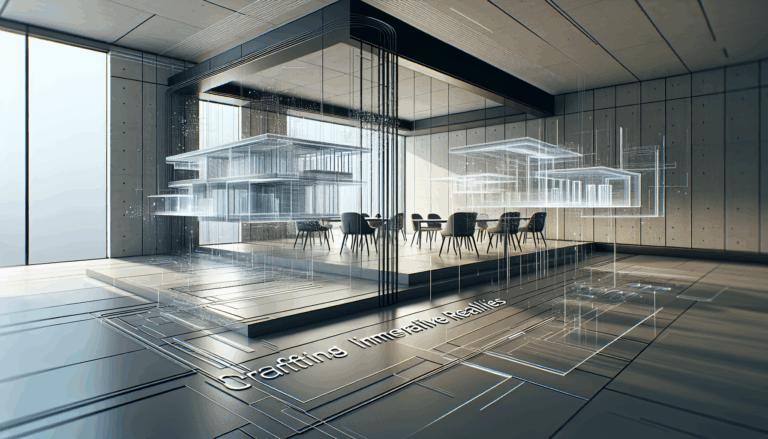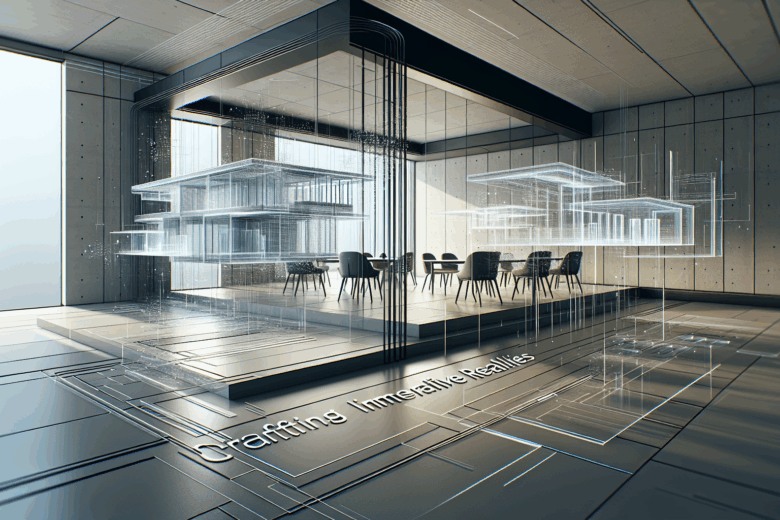Crafting Immersive Realities: The Art and Business of Architectural Visualization in the CG Industry
In the intersection of Architecture and computer graphics (CG), architectural visualization stands as a transformative force. It transcends static blueprints and sketches, breathing life into designs and offering a glimpse into spaces yet to exist. For architects, designers, and CG professionals alike, mastering architectural visualization is not just about rendering a building—it’s about sculpting experiences, narrating stories, and ultimately reshaping how we communicate spatial ideas.
The Significance of Architectural Visualization in CG
Architectural visualization bridges creativity and practicality. It transforms abstract architectural concepts into immersive, photorealistic images and animations, allowing stakeholders—from clients to contractors—to grasp the prescient vision of a project. This immersive preview:
– Minimizes costly design changes during construction
– Enhances client engagement and decision-making
– Amplifies marketing and real estate sales efforts
In today’s CG landscape, architectural visualization is a multidisciplinary playground that intersects with Animation, Multimedia, Advertising, and the Business of computer graphics (CG). Each project becomes a canvas where technology and artistry fuse, pushing the boundaries of how space can be perceived before it physically exists.
Key Elements that Elevate Architectural Visualization
Mastering architectural visualization demands a symbiotic blend of technical prowess and creative intuition. Here are the essential components to focus on:

1. Accurate Modeling: The cornerstone of realism lies in meticulously crafted 3D models. Precision in geometry, adherence to architectural specifications, and attention to detail ensure a faithful representation of the design.
2. Texturing and Materials: Surfaces imbued with realistic textures and materials—stone, glass, wood—transform models from abstract shapes into tactile environments. Reflectivity, roughness, and translucency simulate how light interacts with real-world materials.
3. Lighting and Shadows: Natural and artificial lighting set mood and depth. Understanding light behavior empowers artists to create atmospheres that evoke emotions or highlight key architectural features.
4. Animation and Multimedia Integration: Animations guide viewers through spaces, narrate functional flows, and emphasize interactions within a structure. Multimedia elements such as sound design and interactive tours enrich the user experience.
5. Post-Processing Techniques: Refinements through color grading, depth of field, and subtle effects lend softness or enhance clarity, blurring the line between virtual and tangible.
Trends Shaping Architectural Visualization in the CG Sphere
The CG industry is ever-evolving, with innovations that continually redefine the possibilities for architectural visualization:
| Trend | Impact on Architectural Visualization | Practical Advice |
|————————|————————————————————|——————————————————|
| Real-Time Rendering | Enables instantaneous feedback, interactive walkthroughs | Leverage engines like Unreal Engine for agility |
| Virtual and Augmented Reality | Immerses clients in 3D environments for design validation | Invest in VR/AR hardware and training for immersive demos |
| AI-Powered Automation | Accelerates modeling and material application | Incorporate AI tools to streamline repetitive tasks |
| Photorealistic Texturing | Elevates material authenticity and light interplay | Use high-res scans and PBR (Physically Based Rendering) materials |
| Cloud Collaboration | Facilitates remote teamwork and faster iteration cycles | Adopt cloud platforms for efficient project management |
Understanding these trends enables CG professionals to stay competitive and deliver dynamic architectural experiences that resonate deeper with clients.
Strategic Framework for Developing Architectural Visualizations
Successful projects hinge on structured workflows and clear communication. This step-by-step framework guides teams through a seamless visualization process:
– Concept Discussion: Engage with architects and stakeholders to grasp design intent, mood, and key features.
– Reference Gathering: Collect sketches, plans, and inspirational imagery to inform modeling and texturing.
– 3D Modeling: Create accurate models respecting scale and structural details.
– Material Application: Assign textures and refine materials based on real-world references.
– Lighting Setup: Experiment with different lighting scenarios to best showcase the environment.
– Animation & Multimedia Integration: Develop walkthroughs, ambient sounds, or interactive elements as needed.
– Rendering: Produce high-quality stills or animations using appropriate render engines.
– Review & Iteration: Solicit feedback and refine visuals to align closely with client expectations.
– Delivery & Presentation: Prepare files and presentations tailored for client use or marketing purposes.
Expert Insights: Balancing Artistry and Technology
“Every pixel tells a story,” is a mantra within architectural visualization. Beyond tools and techniques lies the artist’s vision and sensitivity to the built environment. A few insights from seasoned CG professionals:
– Prioritize storytelling: Visualizations should do more than display—they should connect emotionally, guiding viewers through the narrative of space.
– Invest in continuous learning: The CG industry rapidly evolves; mastering new software, plugins, and methodologies preserves your edge.
– Collaborate cross-disciplinarily: Synergy between architects, animators, and multimedia experts creates richer, more authentic visual experiences.
– Build a versatile skill set: Flexibility in animation, rendering, and interactive media empowers creators to meet diverse client needs.
Architectural Visualization as a Catalyst in Advertising and Business of Computer Graphics (CG)
Architectural visualization is no longer confined to project presentations; it’s a powerhouse in Advertising and the broader Business of CG. High-impact visuals help real estate developers and agencies create compelling campaigns that emotionally engage potential buyers, enhancing brand value and accelerating sales cycles.
Integrating multimedia elements into architectural campaigns—such as interactive 3D tours and immersive animations—redefines customer interaction, making it experiential rather than passive. This trend exemplifies how CG disciplines converge, leveraging Animation and Multimedia to amplify Advertising effectiveness.
On the business front, understanding client expectations, budgeting, and delivery timelines sharpens operational success. Transparent communication paired with cutting-edge CG techniques cultivates trust and builds long-term partnerships that fuel industry growth.
Empowering the Future Creators of Architectural Visualization
For emerging talents and enthusiasts eager to dive into this vibrant CG niche, here are actionable tips to embark on a rewarding journey:
– Master foundational software such as 3ds Max, Blender, SketchUp, and Lumion.
– Gain proficiency in render engines like V-Ray, Corona, and Unreal Engine.
– Develop a keen sense of architectural history and design principles.
– Build a diverse portfolio showcasing varied styles, from minimalist interiors to sprawling urban landscapes.
– Engage with CG communities, attend webinars, and participate in challenges to stay inspired and connected.
– Experiment boldly, merging Animation, Multimedia, and Advertising principles to craft innovative visual stories.
Architectural visualization is more than a technical endeavor—it’s the artful craft of making dreams visible. Through diligent practice, creative exploration, and business acumen, CG professionals can shape environments that not only stand tall but sing with life and meaning. The pathway ahead invites us to reimagine architecture itself as a multi-sensory narrative, woven from pixels and passion.

